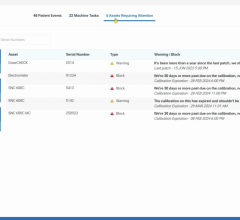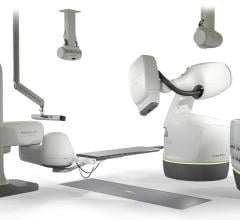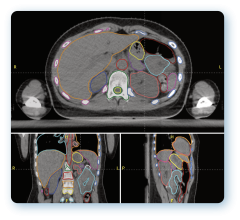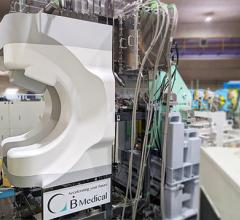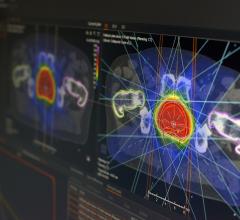May 10, 2011 – The Methodist Hospital in Houston has taken a significant new step in radiation therapy and surgical planning at the facility’s world renowned Plato’s CAVE (Computerized Augmented Visual Environment). New PhyZiodynamics from Ziosoft, Inc., a pioneer and leader in supercomputing functional analytics, will be used to produce true-fidelity, highly accurate 3-D and 4-D images based on computed tomography (CT), magnetic resonance (MR), and positron emission tomography (PET) scans of the brain, lungs and other organs.
“The images produced by applying PhyZiodynamics technology to multiple modality scans are both breathtaking and accurate,” said E. Brian Butler, M.D., chairman of radiation oncology at Methodist and founder of Plato’s CAVE. “The ability to produce 3-D images with such high fidelity motion coherence will enable us to obtain reliable 4-D motion analysis data for planning advanced surgical and therapeutic patient outcomes. The next logical step is to develop reproducible, functional analysis of this motion through the blending of multiple image parameters, yielding, hopefully, even greater diagnostic value.”
Plato’s CAVE at Methodist allows physicians to see a fully dimensional look into a patient’s internal anatomy and visualize, in multiple dimensions, a treatment plan for surgery or other procedure.
One particular area of interest to Butler and his radiation therapy treatment team is the ability to refine a treatment plan and to interactively guide and, if necessary, deform the radiation dose for tumors to avoid compromising functional pathways within the brain accounting for each individual patient’s unique anatomical structure. It is essential to avoid radiation exposure to particular areas of the brain, such as the ocular nerve or speech areas. Precise imaging and functional analytics regarding proximity to these critical areas would provide major benefits to patient care for radiation oncologists.
“We have been successful in creating very detailed 3-D brain atlases and physician workflow templates, but really needed something with an increasing level of detail and flexibility based on evolving state-of-the-art imaging acquisition protocols and resultant increasing amounts of data within a patient’s medical imaging scan,” said Paul E. Sovelius, co-founder and architect of Plato’s CAVE technology and scientific visualization expert at Methodist. “PhyZiodynamics technology provides greater accuracy and crystal clear 3-D clinical visualization with true three-dimensional volumetric data. It may allow potential breakthrough diagnostics enabled by real time deformable registration of multi-modality image data."
PhyZiodynamic solutions provide algorithms for functional imaging analysis in multiple dimensions. Ziosoft’s open standard software technology utilizes lossless image data, which ensures the true fidelity of all data at all times for any DICOM imaging modality. This has resulted in precise image quality, optimized user efficiency, potential for significant dose reduction and maximum cost effectiveness for an extensive range of clinical applications.
Founded in April 2009, Plato’s CAVE is named after Plato’s Allegory of the Cave. In this classic work, life-long prisoners saw shadows on a cave wall as reality and blindly accepted it as fact. One day, a prisoner was freed and actually saw the outside world, giving him a more expansive view of reality. Similarly, Methodist’s Plato’s CAVE opens up a new world for clinicians and patients alike, enabling powerful visual computer technology to provide more accurate information in planning the course of treatment, educating the patient about the treatment and providing for professional consensus.
For more information: www.methodisthealth.org, www.ziosoftinc.com


 June 19, 2024
June 19, 2024 

